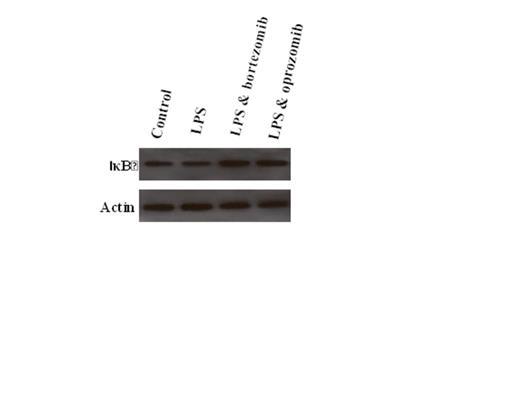Abstract
Constitutive and immunoproteasome inhibitors (C&IPI) were thought to suppress nuclear factor-κB (NF-κB) pathway by preventing IκB degradation, which prevents NF-κB translocation into the nucleus. This mechanism of action has since been questioned by a number of studies. First, bortezomib promoted constitutive NF-κB activity in endothelial cell carcinoma. Second, NF-κB constitutive activity was resistant to bortezomib in multiple myeloma cell lines. Third, bortezomib increased IκB mRNA but post-transcriptionally downregulated IκB in normal cells and in multiple myeloma cell lines resulting in induced canonical NF-κB activation. Lastly, bortezomib increased nuclear levels of IκB as opposed to lowering cytoplasmic levels in cutaneous T cell lymphoma cell line suggesting that nuclear translocation of IκB was possibly responsible for NF-κB inhibition. The inhibitory activity of C&IPI on dendritic cells (DC) is of interest in the prevention of graft versus host disease (GvHD). It has been shown that different C&IPI impede DC maturation and T cell priming both in vitro and in vivo. Herein we sought to understand the mechanism of action of proteasome and immunoproteasome inhibitors on DC and to test their effect on IκB and NF-IκB expression.
We first performed RT PCR on lysates of DC obtained from the peripheral blood of 7 patients who received post-transplant cyclophosphamide and bortezomib as prevention of GvHD on a phase I clinical trial. Patients received allogeneic transplantation from matched-related or unrelated donors. Patients received no other immunosuppressive therapy except for rabbit anti-thymocyte globulin for those receiving graft from unrelated donor. Steroids were not allowed on the study. Samples were obtained on days +1, +4, and +7. The results were analyzed in comparison to samples obtained on day 0 before stem cell infusion. We then performed the same experiment on lysates of DC obtained from the peripheral blood of healthy volunteer donors. DC were untreated or incubated with bortezomib (10 nM for 4 h), carfilzomib (30 nM for 1 h), oprozomib (100 nM and 300 nM for 4 h), ONX 0914 (200 nM for 1 h), PR-825 (125 nM for 1 h), or PR-924 (1000 nM for 1 h). The drug concentration and duration of exposure were chosen based on the IC50 on proteasome activity and to reproduce in vivo conditions. We also performed IκB western blot on DC isolated from peripheral blood of healthy volunteers, untreated or incubated with bortezomib (10 nM for 4 h) or oprozomib (300 nM for 4 h). Each experiment was performed at least in triplicate.
We found that the combination of cyclophosphamide and bortezomib significantly and progressively increased IκB mRNA while decreasing NF-κB mRNA in DC studied ex vivo. We also found that all studied C&IPI increased IκB mRNA to a variable degree while only oprozomib (300 nM) decreased NF-κB mRNA in DC in vitro. Finally, both bortezomib and oprozomib increased IκB protein level in DC in vitro (figure).
Our data suggest that C&IPI increase IκB expression in DC. As opposed to the previously reported data in other cell types, the effect is not associated with post-transcriptional downregulation. Cyclophosphamide and bortezomib also decrease NF-κB expression in DC in vivo while only oprozomib had the same effect in vitro. The effect of C&IPI on IκB and NF-κB expression may represent a new mechanism of action and suggests their effect may be cell-type dependent.
Al-Homsi:Millennium Pharmaceuticals: Research Funding. Off Label Use: The use of cyclophosphamide and bortezomib for GvHD prevention. Lai:Millennium Pharmaceuticals: Research Funding.
Author notes
Asterisk with author names denotes non-ASH members.


This feature is available to Subscribers Only
Sign In or Create an Account Close Modal